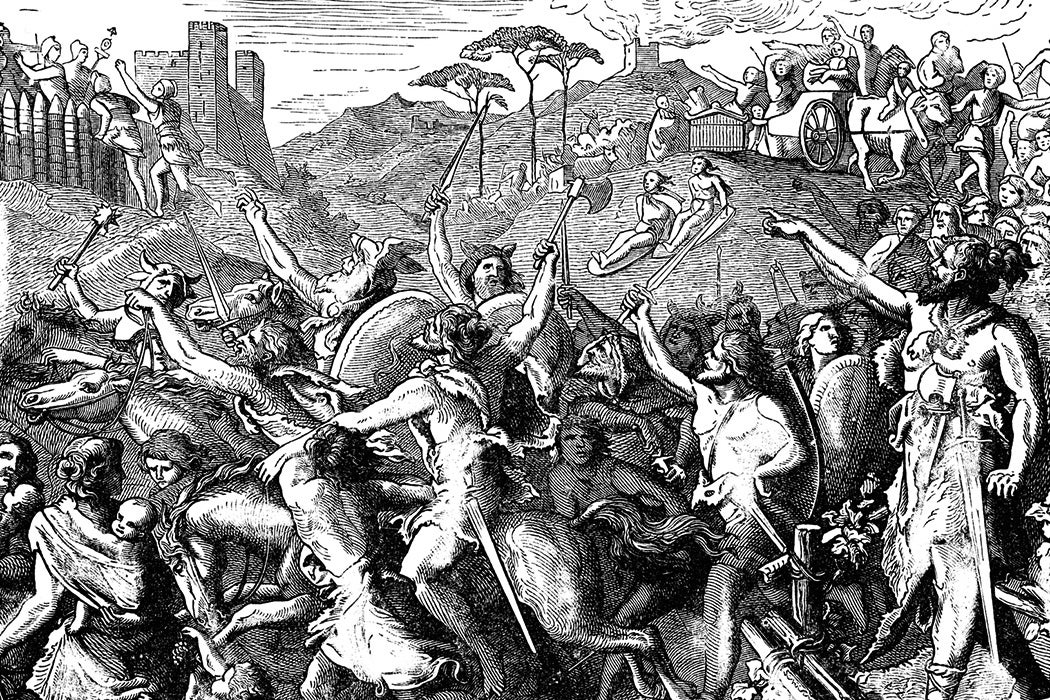History, said Henry Ford historically, “is more or less bunk.” Bunk being slang for bull, Ford was complaining about Great Man history that didn’t include inventors like himself. So he set up his own museum to praise… well, himself, and the farmers and tinkers he thought under-represented in historical accounts. He wasn’t the first nor the last person to understand that history is often written by elites or the servants of elites, and that these people have agendas, whether they know it or not. Ford’s own agenda was a kind of populist boosterism, which disturbingly meshed with his Hitler-inspiring antisemitism.
History is constantly being re-written and revised—although the latter idea, especially as “revisionism,” is often used in a pejorative sense by those politically opposed to new historical takes.
Revising Ford with some precision, historian Eric Michaud writes, “The writing of history has always been one of the major tools of power. It shares with art not only the capacity to depict something that never existed but also the capacity to bring about the new simply by describing it.” Michaud’s example is the old—yet not as old as it appears—story of the Germanic sacking of Rome and the rise of Western Europe. That telling of things that happened sixteen centuries ago…is only two centuries old.
“The ‘barbarian invasions’ only began to take up a significant place in the European imaginary after the eighteenth century,” writes Michaud, “when a few historians decided to use the idea to political effect in order to influence the course of history.”
You’ll probably remember this history: Germanic tribes sweep into the decaying Roman Empire during fourth and fifth centuries. Until around 1800, these were considered a catastrophe that set off the Dark Ages (a term with little currency today, but that’s another story). After 1800 or so, the invaders were now welcomed as “a salutary release from a long period of stagnation that could only have ended in decay.” In the then new history, the Germans, in short, modernized (European) civilization by forcing themselves on the decadent Latin world and forging “a new human being,” as the Enlightenment philosopher Johann Gottfried von Herder put it.
The humanists of the sixteenth century lumped Burgundians, Alamanni, Goths, Vandals, Franks, Herules, Visigoths, Alans, and others from beyond the Rhine and the Danube as “Germans.” This invention of the “Germans” followed Tacitus, who centuries earlier had blithely characterized the Germans as a people/race.
Turns out there were few Germans among the Germanic peoples. Nonetheless, the French pointed back to the Franks as the origins of French nobility. The Spanish nodded to the Visigoths; the Spanish word godo, literally translated as Goth, means nobility. Meanwhile, not even the English Channel was a barrier to the idea of the Germanification of Britain via first the Angles and the Saxons and then the Normans, who were of course partially descended from Norse men.
This was, in short, a racial history as well as an imaginatively Romantic one. It’s no coincidence that it emerged with the rise of the nation state. “Germanic” foundations were considered good bones for nationalism.
Weekly Newsletter
The invasion thesis was tempered during the course of the nineteenth century. As Michaud puts it, the old invasions started to be described described as migrations “from the vague immensity of a borderless Scythia”—the steppe land between the Caspian and Black Seas—“coming to impregnate the native populations of Western Europe.” Meanwhile, from the 1840s on, Walter Scott helped inspire a frenzy for unearthing the remains of these supposed movers and shakes, whether they were mythologized as Gauls, Germans, or Celts. Art history moved in the same vein.
“Archeology and the history of art thus set themselves the same task: to determine the correct ‘ethnic’ lineage for their objects, whether those objects were worked of art or mortal remains,” writes Michaud.
Manner, style, and spirit in art as in politics began to be defined racially. The late nineteenth-century culmination of all this was Aryanism, the notion that the Northern European inheritors of a supposed Proto Indo-European people were a superior race. (Somehow they’d all become “dolichocephalic,” long-headed, and blond-haired in their journey.) The pre-Nazi concocters of this racial fantasy included Arthur de Gobineau and Georges Vacher de Lapouge, both French, and the British-born Houston Stewart Chamberlain. That was deeply ironic, given the targets of the actual German invasions of the early 1940s.







